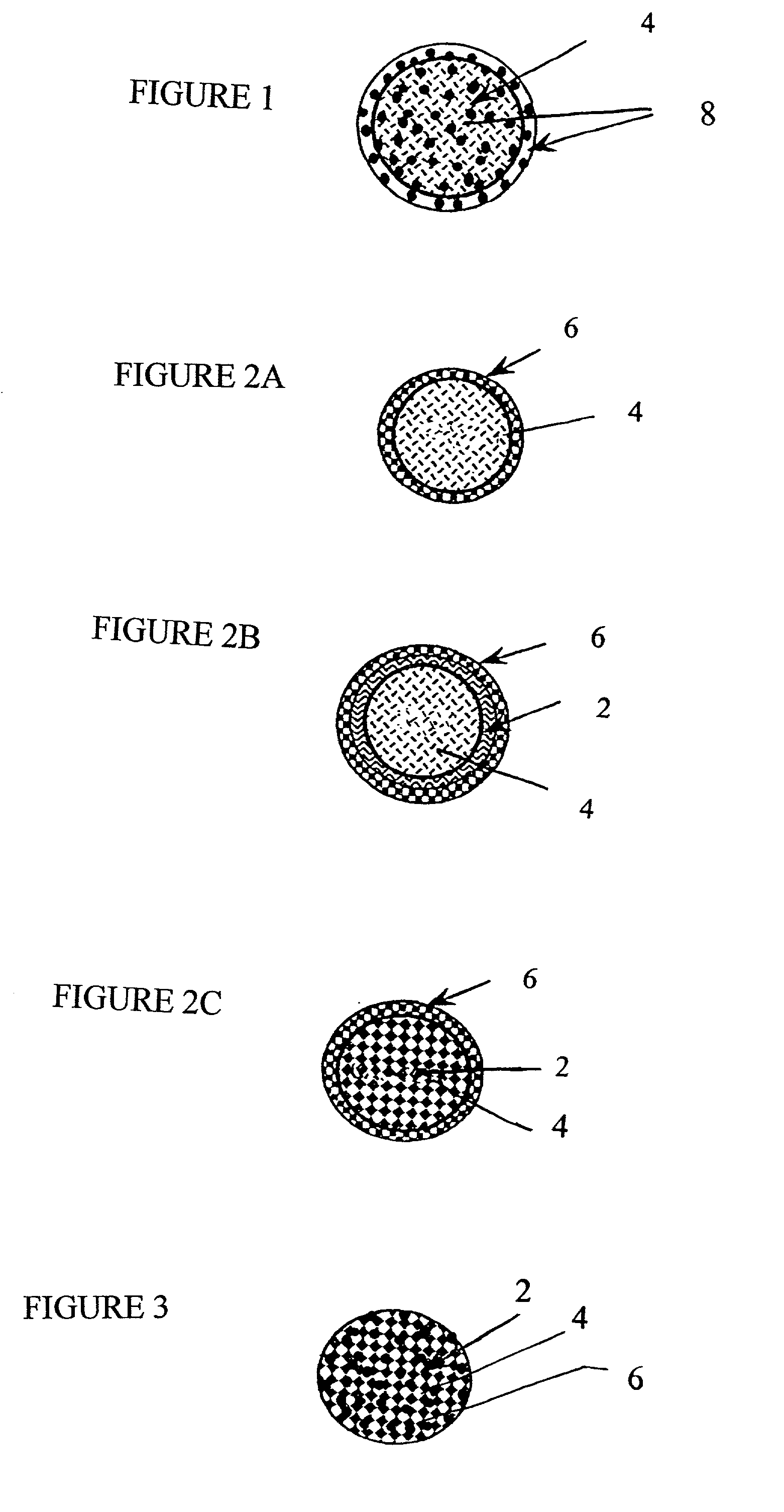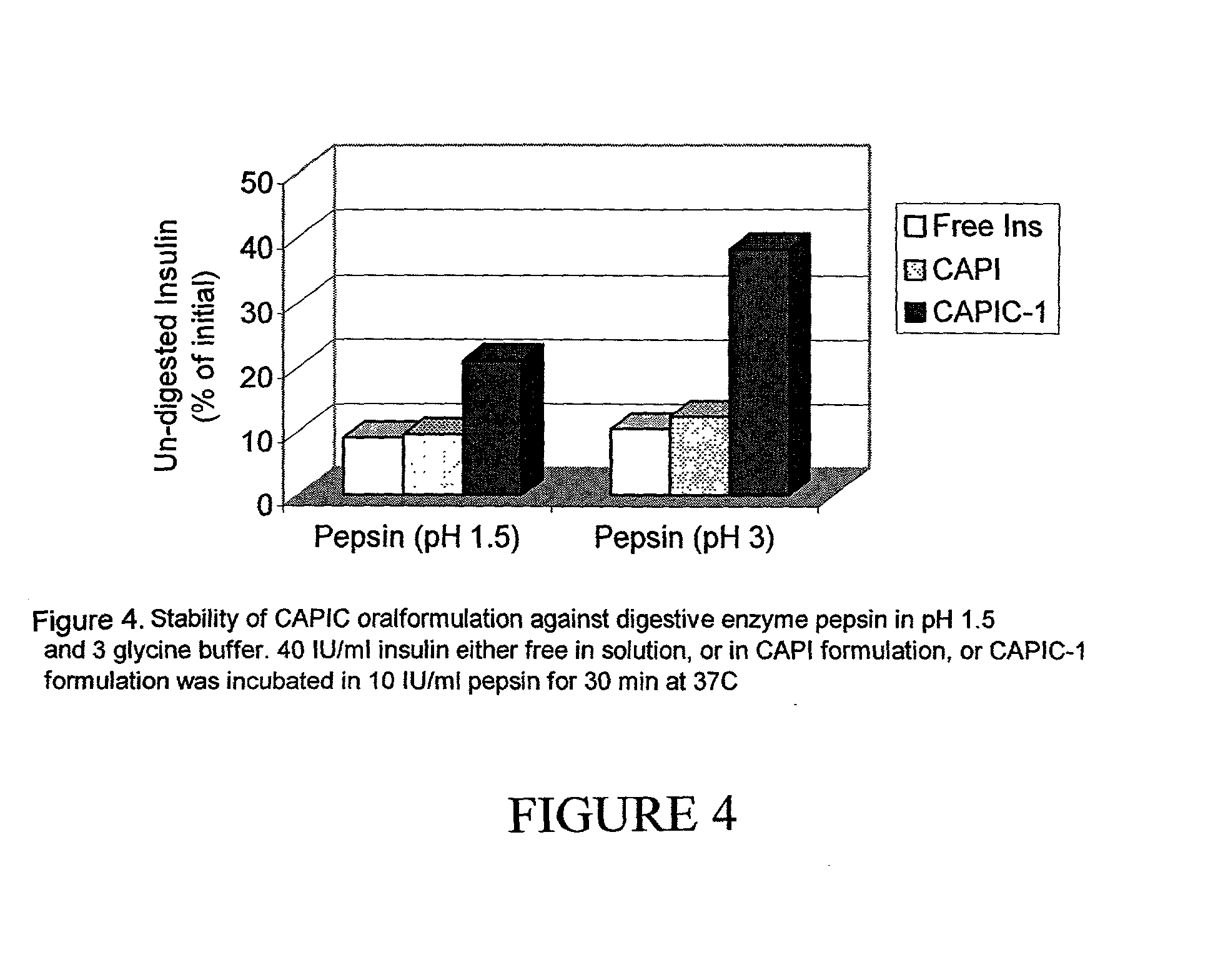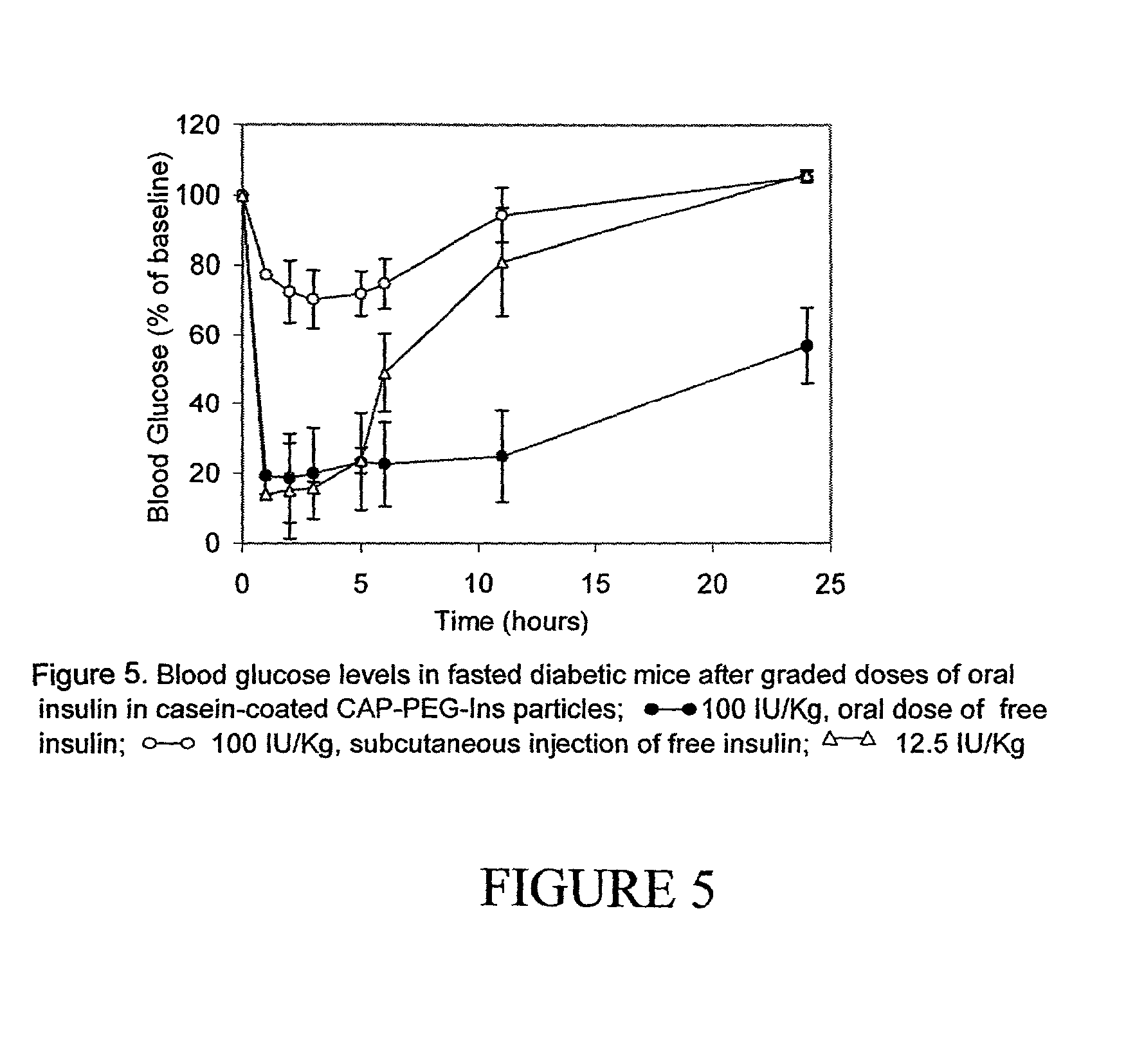Compositions and methods for therapuetic agents complexed with calcium phosphate and encased by casein
- Summary
- Abstract
- Description
- Claims
- Application Information
AI Technical Summary
Benefits of technology
Problems solved by technology
Method used
Image
Examples
example 1
[0081] CAP Particles.
[0082] A 12.5 mM solution of CaCl.sub.2 is prepared by mixing 1.8378 g of CaCl.sub.2 into 800 mL of sterile GDP water under aseptic conditions until completely dissolved, and the solution diluted to 1 L and filtered. A 15.625 mM solution of sodium citrate was prepared by dissolving 0.919 g of sodium citrate into 200 mL of sterile GDP water with mixing using aseptic techniques and filtered. A 12.5 mM solution of dibasic sodium phosphate was prepared by dissolving 1.775 g sodium phosphate into 1 L of sterile GDP water with mixing using aseptic techniques and filtered. All solutions were stored at room temperature.
[0083] The calcium chloride solution was combined with the sodium citrate solution and thoroughly mixed. Subsequently, the sodium phosphate solution was added with mixing. Turbidity appeared immediately as particles began to form. The suspension was allowed to mix for several minutes and was sampled for endotoxin testing using aseptic technique. Mixing wa...
example 2
[0084] CAP Particles Impregnated by Polyethylene Glycol and Coated with Therapeutic Agent, Such as Insulin.
[0085] Particles having a surface modifying agent (2), such as polyethylene glycol (PEG), impregnated within the core calcium phosphate particle (4) and having a material (6), such as a therapeutic agent, and more particularly human insulin, at least partially coated on the surface are shown in FIG. 2C. Particles having at least a partial coating of human insulin were prepared by simultaneously injecting 5 mL of 125 mM CaCl.sub.2 and 1 mL of 156 mM sodium citrate into a 250 mL beaker containing 100 mL of 1% polyethylene glycol (PEG),under constant stirring. Precipitate was formed following the addition of 5 mL of 125 mM Na.sub.2HPO.sub.4. Mixing was continued for 48 hours at room temperature. The resulting particle suspension was sonicated at maximum power for 15 minutes and stored at room temperature until ready for insulin attachment.
[0086] A therapeutic agent, in this exampl...
example 3
[0087] CAP-PEG-Ins (CAPI) Formulation.
[0088] Particles having both a surface modifying agent (2) and a material (6), such as a therapeutic agent impregnated within the core calcium phosphate particle (4) are shown in FIG. 3. The following materials were used as purchased to prepare the particle suspension comprising insulin and PEG incorporated in biodegradable calcium phosphate: Recombinant human insulin (Ins) (28 IU / mg) expressed in E. coli (Sigma, St. Louis, Mo.), PEG-3350 (Sigma), lyophilized bovine casein (Cas) (Sigma), calcium chloride dihydrate (Mallinckrodt, Paris, Ky.), sodium citrate dihydrate (Mallinckordt), dibasic sodium phosphate (Mallinckrodt), calcium-and magnesium-free Dulbecco's phosphate buffered saline (PBS) (Life Technologies, Grand island, N.Y.).
[0089] A stock solution of 20 mg / ml HINS was prepared in 0.01 N HCl. One volume (1 V) of insulin was diluted to 1 mg / ml using an aqueous solution of 1% (w / v) PEG and mixed thoroughly for about 1 min. Aqueous solutions o...
PUM
| Property | Measurement | Unit |
|---|---|---|
| Particle size | aaaaa | aaaaa |
| Particle size | aaaaa | aaaaa |
| Structure | aaaaa | aaaaa |
Abstract
Description
Claims
Application Information
 Login to View More
Login to View More - R&D
- Intellectual Property
- Life Sciences
- Materials
- Tech Scout
- Unparalleled Data Quality
- Higher Quality Content
- 60% Fewer Hallucinations
Browse by: Latest US Patents, China's latest patents, Technical Efficacy Thesaurus, Application Domain, Technology Topic, Popular Technical Reports.
© 2025 PatSnap. All rights reserved.Legal|Privacy policy|Modern Slavery Act Transparency Statement|Sitemap|About US| Contact US: help@patsnap.com



